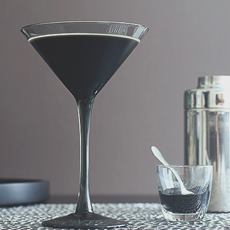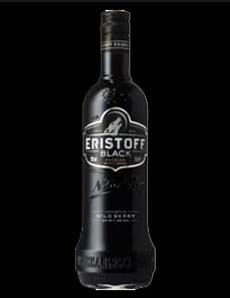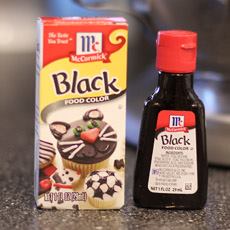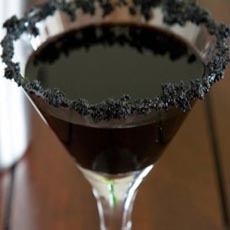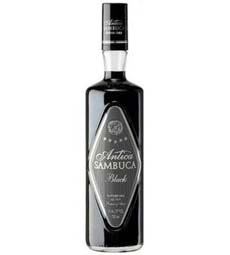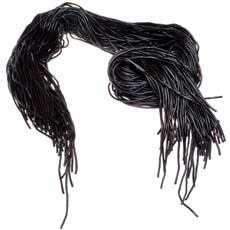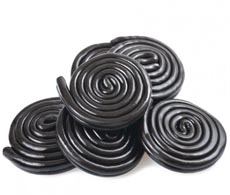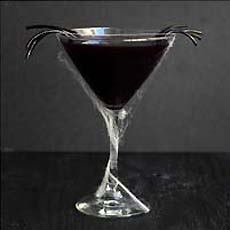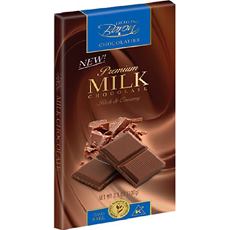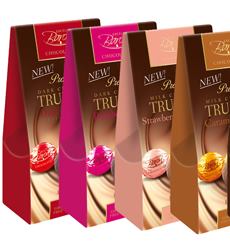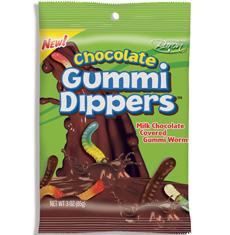|
It’s Black Friday. When you get back from fighting the crowds, it’s time for a black cocktail.
Trouble is, the well known “black” cocktails, like the Black Russian, actually brown.
But there are options, including using the first three ingredients to color any clear spirit (clear liqueurs, gin, tequila, rum, etc.):
Black vodka
Black food color
Squid ink
Black sambuca
1. BLACK VODKA
In some parts of the world, people like black vodka, which is colored with black catechu, an extract made from the bark of a southeast Asian acacia tree.
Some are flavored, some aren’t.
The problem is, some brands like Blavod are actually dark brown, not black. Problem #2: You can find black vodkas in Europe and Asia, but not readily in the U.S., unless you’re lucky to track down Blavod, produced in the U.K., and add some black food color.
We’ve seen a photo of a glass of Eristoff vodka, from Russia, which looks pitch black. We haven’t been able to find a photo of Znaps Black Jack.
If you live in a state that is covered by BevMo.com, you can order the Eristoff.
2. BLACK SAMBUCA
The good news is, we’ve found ample supplies of black sambuca in the U.S.
Sambuca is an Italian anise-flavored liqueur. The flavor of anise is reminiscent of fennel and licorice.
Fans of these flavors have lots of opportunities to make cocktails black with black sambuca. Try a combination of black vodka and black sambuca!
3. BLACK FOOD COLOR.
The best bet is to color your own vodka black.
Before McCormick introduced black food color to consumers in 2007, black was approximated by combining 10 drops each of blue and red food coloring and 8 drops of green food (this is enough to color a 750 ml bottle of clear spirits).
The problem with mixing the three colors in a clear liquid, as opposed to anchoring the color in frosting, is that the colors will precipitate out of the spirit, requiring shaking the bottle before pouring a drink.
Best bet: McCormick black food color. It’s available in supermarkets nationwide, and online.
You can also find professional black gels and pastes at baking supply stores, or online from companies like Wilton.
4. SQUID INK
If you have access to a fish market that sells squid ink or sepia ink (the latter from cuttlefish, a different species), you can use it in a Martini or other savory cocktail. Used in moderation, it has a slight salty tasted.
Want to try it? Here’s how.
5. BLACK RICE INFUSION
According to an About.com reader, you can infuse black rice into a bottle of vodka and achieve a good black color, with no added taste. Infuse it in a cool dark place for three days or until it achieves the desired color, shaking the bottle once a day. Infuse in a large jar and strain the vodka into a clean bottle.
WHEN TO MAKE BLACK COCKTAILS
In addition to Black Friday, you can have fun with black drinks for for:
Black And White Parties
Black Monday*
Dia De Los Muertos
Goth Gathering
Halloween
________________
*If you’re looking for another occasion to drink, October 19, 1987 saw the collapse of stock prices on Wall Street. The original Black Monday in America was October 28, 1929, when the stock markets began to crash, engendering the Depression. In 1987, the crash began in Hong Kong and spread west to Europe, then to the U.S. There are several other Black Mondays that mark disasters around the world.
|



